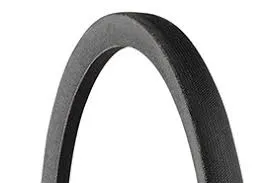- Arabic
- French
- Russian
- Spanish
- Portuguese
- Turkish
- Armenian
- English
- Albanian
- Amharic
- Azerbaijani
- Basque
- Belarusian
- Bengali
- Bosnian
- Bulgarian
- Catalan
- Cebuano
- Corsican
- Croatian
- Czech
- Danish
- Dutch
- Afrikaans
- Esperanto
- Estonian
- Finnish
- Frisian
- Galician
- Georgian
- German
- Greek
- Gujarati
- Haitian Creole
- hausa
- hawaiian
- Hebrew
- Hindi
- Miao
- Hungarian
- Icelandic
- igbo
- Indonesian
- irish
- Italian
- Japanese
- Javanese
- Kannada
- kazakh
- Khmer
- Rwandese
- Korean
- Kurdish
- Kyrgyz
- Lao
- Latin
- Latvian
- Lithuanian
- Luxembourgish
- Macedonian
- Malgashi
- Malay
- Malayalam
- Maltese
- Maori
- Marathi
- Mongolian
- Myanmar
- Nepali
- Norwegian
- Norwegian
- Occitan
- Pashto
- Persian
- Polish
- Punjabi
- Romanian
- Samoan
- Scottish Gaelic
- Serbian
- Sesotho
- Shona
- Sindhi
- Sinhala
- Slovak
- Slovenian
- Somali
- Sundanese
- Swahili
- Swedish
- Tagalog
- Tajik
- Tamil
- Tatar
- Telugu
- Thai
- Turkmen
- Ukrainian
- Urdu
- Uighur
- Uzbek
- Vietnamese
- Welsh
- Bantu
- Yiddish
- Yoruba
- Zulu
Nov . 02, 2024 04:25 Back to list
fan belt for car
Understanding the Importance of Fan Belts for Cars
The fan belt, also known as the serpentine belt or accessory drive belt, plays a crucial role in the functioning of your car's engine. Despite its relatively simple appearance and small size, it is integral to the operation of several key components that keep your vehicle running smoothly. Understanding the importance of the fan belt can help car owners maintain their vehicles more effectively and avoid costly repairs.
What Does the Fan Belt Do?
The primary function of the fan belt is to transfer power from the engine crankshaft to various accessories, including the alternator, power steering pump, water pump, and air conditioning compressor. This belt ensures that these components operate synchronously with the engine’s performance, thereby helping to maintain the overall functionality of the vehicle.
In traditional designs, cars used multiple belts for different accessories. However, modern vehicles typically employ a serpentine belt system, which is a single belt that winds around various pulleys. This design is more efficient and simplifies the replacement process since only one belt is needed instead of several.
Signs of a Worn or Failing Fan Belt
Like any automotive component, fan belts can wear out over time. It is crucial for car owners to recognize the signs of a failing belt to prevent further damage and potential breakdowns. Common indicators that your fan belt may need attention include
1. Squealing Noises If you hear a high-pitched squealing noise when starting your car or while driving, this could signal that the belt is worn or loose. 2. Cracks and Fraying A visual inspection can reveal cracks, fraying, or glazing on the belt’s surface. If you notice any of these signs, it is time for a replacement.
3. Overheating Engine The fan belt is responsible for driving the water pump, which is essential for cooling the engine. If the belt is failing, it can lead to engine overheating.
fan belt for car

Maintenance Tips
To extend the lifespan of your fan belt and ensure that your vehicle runs efficiently, regular maintenance is essential. Here are a few tips
- Regular Inspections Check the condition of the fan belt periodically for any signs of wear. Most mechanics will inspect the belt during routine oil changes.
- Tension Checks Ensure the belt is properly tensioned. A loose belt can slip, while an overly tight belt can cause wear on components.
- Replacement Timing Refer to your car’s owner manual for recommendations on when to replace the fan belt. While belts can last anywhere from 50,000 to 100,000 miles, it's always safer to replace them sooner if any signs of distress appear.
Conclusion
In conclusion, the fan belt is a vital component of your car that should not be overlooked. Understanding its purpose and recognizing the warning signs of wear can save car owners from extensive repairs and potential safety hazards on the road. By incorporating regular inspections and maintenance into your routine, you can ensure your vehicle remains in optimal condition, providing you with a smooth and reliable driving experience.
-
Korean Auto Parts Timing Belt 24312-37500 For Hyundai/Kia
NewsMar.07,2025
-
7PK2300 90916-T2024 RIBBED BELT POLY V BELT PK BELT
NewsMar.07,2025
-
Chinese Auto Belt Factory 310-2M-22 For BMW/Mercedes-Benz
NewsMar.07,2025
-
Chinese Auto Belt Factory 310-2M-22 For BMW/Mercedes-Benz
NewsMar.07,2025
-
90916-02660 PK Belt 6PK1680 For Toyota
NewsMar.07,2025
-
drive belt serpentine belt
NewsMar.07,2025

